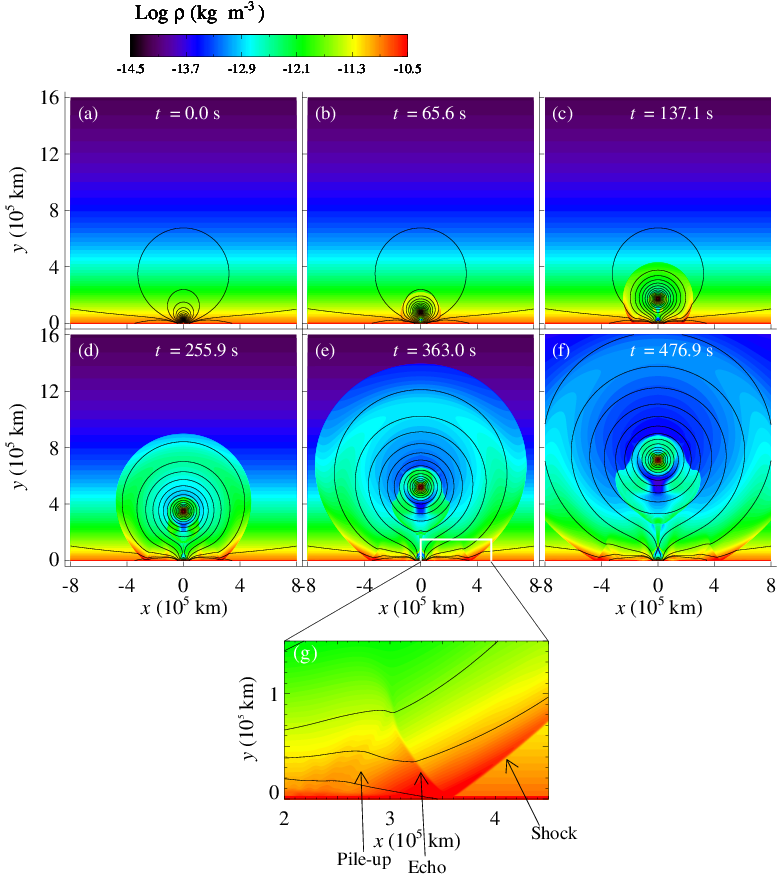XIE Xiaoyan, a PhD candidate from Yunnan observatories of Chinese academy of sciences, and her collaborators investigate the disturbance to the solar atmosphere caused by the solar eruption via numerical experiments. The results show some interesting structures that have not been reported in previous simulation results and have been published recently in the Monthly Notices of the Royal Astronomical Society.
Solar eruptions cause various types of disturbance in the solar atmosphere, including the Moreton wave, which is the wave observed in the chromosphere, and EUV (extreme ultraviolet) wave, which appears in the corona.
The study of the disturbance could help understand various physical properties of the solar eruption, and perform the plasma diagnostics for the region of interest. Comparisons of numerical results with observational results would further help constrain the theory on the eruption, and help improve the numerical model.
In this work, they explored the disturbance caused by solar eruptions via numerical experiments with special attention on large-scale waves. In addition to the phenomena that have been showed by previous numerical experiments, a new structure known as the plasma pile-up was also seen.
As the disrupting magnetic structure moves outwards, a fast-mode shock was invoked in front of it. The fast-mode shock expands sideward when propagating forward, and evolves to a crescent shape; eventually the two ends of the crescent touch the bottom boundary and cause various types of disturbances to the near region.
By comparing the simulation with the observation, the authors first proposed the method of confirming the echo, and further showed that the echo can be observed, confirming the "true wave" nature of the EUV waves. A plasma pile-up region (Figure 1g) produced by plasma accumulation was behind the echo. This is a brand new phenomenon that has not been reported previously.
Two features of the pile-up region drew the attention: its height from the bottom boundary is similar to that of some EUV waves, and its velocity is about 1/3 the velocity of the fast-mode shock along the low layer of the atmosphere, which is believed to be the location of the Moreton wave front.
This suggests that the pile-up may be a source of the EUV wave as well. According to their numerical results, they also obtain "observed" SDO/AIA (Solar Dynamic Observatory/ Atmospheric Imaging Assembly) images in different wave bands. The results show that the characteristics of the EUV waves "observed" in different bands are indeed different, which is consistent with the true observational results regarding the EUV waves.

Figure 1. Panels (a)–(f) show the evolution of the system during eruption, in which the color shading indicates the distribution of the density and the black solid curves are the magnetic field lines. Panel (g) is a zoom-in of the region in the white box in panel (e) to make the enlarged features of the echo, shock and pile-up clearer.(Image by Xie Xiaoyan)
Contact:
XIE Xiaoyan, YNAO, CAS
xyxie@ynao.ac.cn